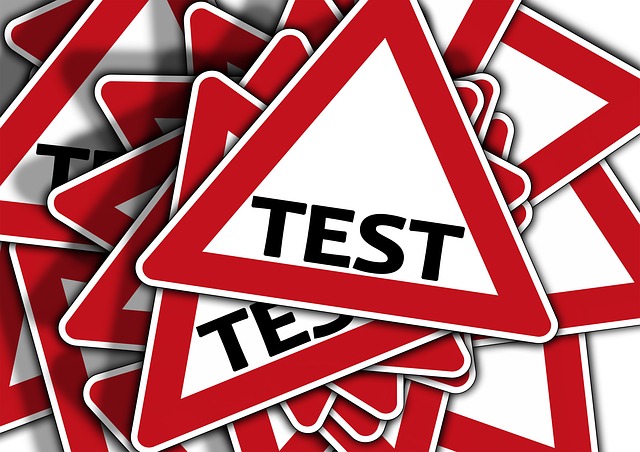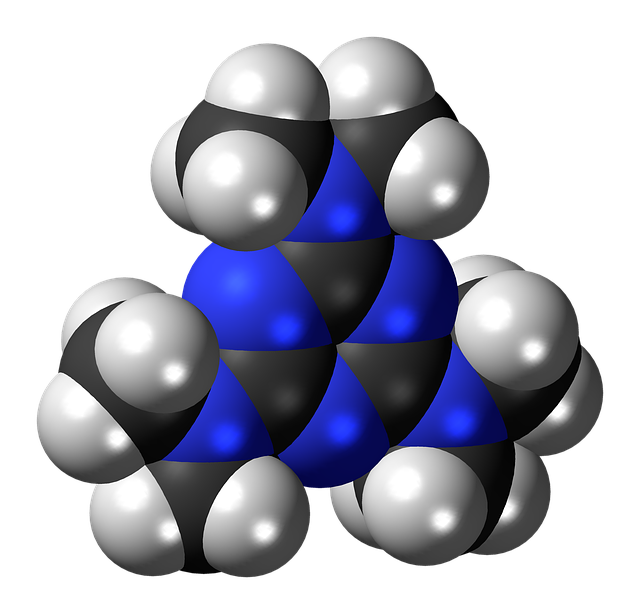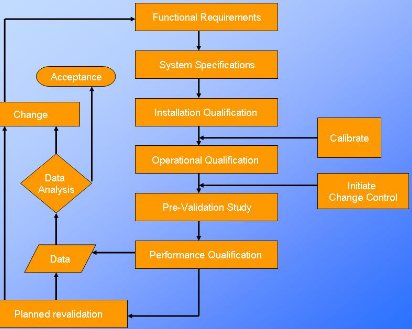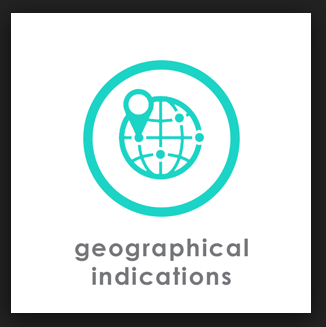DRUG INSPECTOR Practice Question & Answers – DI Exam Practice Paper is here for you to check out how well is your preparation going on. This is the smart way to learn.
DRUG INSPECTOR Practice Questions
1. Long term use of cemetidine may cause
1. Sexual disfunction 2. Renal failure
3. Rebound acidity 4. Parietal cell blockade
3. Piperazine is used in the treatment of
1. Amoebiasis 2. Helminthiasis
3. Giardiasis 4. Malaria
4. The drug of choice for the treatment of filariasis is
1. CocaDiethyl carbamazine
2. Niclosamide
3. Biloscanate 4. None of the above
16. Cancer of epithelial tissue is called
1. Carcinoma 2. Sarcoma
3. Lukemia 4. Hodgkin’s disease
17. The Latin term for ointment is
1. Ungentum 2. Pasta
3. Oculentum 4. Linimentem
18. The Latin term for “When required” is
1. si opus sit 2. Dolor urgente
3. tussi urgente 4. statim
19. Material used to assist adhesion of skin graft is
1. Human thrombin 2. Human
immunoglobulin
3. Plasma protein fraction 4. Gum saline
20. The incompatibility encountered when aspirin is powdered together with phenazone is
1. Insolubility 2. Liquefaction
3. Immiscibility 4. Precipitation
21. Existence of antibiotic was first proposed by
1. Pasteur 2. Paul Ehrlich
3. Fleming 4. Dubos
22. The Antibiotics are manufactured in large scale by
1. Surface culture in liquid medium
2. Surface culture in solid medium
3. Submerged culture in liquid medium
4. Submerged culture in solid medium
23. Increased hepatic angiotensinogen production is responsible for following
1. Renal hypertension 2. Pills hypertension
3. Vascular hypertension 4. Endocrine hypertension
24. The following type of pulse is seen in myocardial infraction
1. Pulsus deficit 2. Pulsus alternens
3. Anacrotic pulse 4. Water hammer pulse
25. Drugs of choice for grandmal epilepsy are
1. Phenytoin and sodium valproate
2. Sodium valproate and carbamazepin
3. Carbamazepin and phenobarbital
4. Phenobarbital and phenytoin
26. Morphine is contraindicated for patients with head injury because it produces
1. Sedation
2. Hyperactive spinal refluxes
3. Respiratory depression
4. Analgesia
27. Which of the following is anti metabolite ?
1. Cyclophosphamide 2. Thiotepa
3. Methotrexate 4. Chlorambucil
28. Which of the following anticancer drug is obtained from plant ?
1. Cisplatin 2. Uracil
3. Vincristine 4. Tamoxifen
29. In prescription the Latin term “fiat” means
1. Let it be mixed 2. Let it be made
3. Let it be warmed 4. Let it be sent
30. Most dangerous organism infecting the eye is
1. Pseudomonas aeruginosa
2. Staphylococcus aureus
3. Proteus vulgaris
4. Bacillus subtilis
42. The word posology is derived from Greek word “posos” which means
1. “How much” 2. Quantity
3. Amount 4. How long
You are looking for the Drug Inspector Exam Question Paper, i am giving here:
Of the following, who is elected 5.
unopposed in the recent election to
Rajya Sabha
(1) Mayawati
(2) Vilasa Rao Deshmukh
– (3) Rajiv Shukla
( 4) All the above
1. Senna is
1. Irritant laxative 2. Osmotic laxative
3. Bulk laxative 4. Emollient laxative
2. Long term use of cemetidine may cause
1. Sexual disfunction 2. Renal failure
3. Rebound acidity 4. Parietal cell blockade
3. Piperazine is used in the treatment of
1. Amoebiasis 2. Helminthiasis
3. Giardiasis 4. Malaria
4. The drug of choice for the treatment of filariasis is
1. CocaDiethyl carbamazine
2. Niclosamide
3. Biloscanate 4. None of the above
5. The prescription starts with the symbol Rx, means
1. Send 2. Prescribe
3. Take thou 4. Prepare
6. Which type of prescription should contain the age of the patient ?
1. Prescription for a child
2. Prescription containing special formula
3. Prescription containing patient medicament
4. Prescription for elderly patient
7. The plasma substitute, dextran is a homo polymer of glucose, which is produced by
1. Polymerization of glucose
2. Chemical modification of starch
3. Chemical modification of cellulose
4. By growing the organism leuconostoc mesenteroides in sucrose containing medium
DRUG INSPECTOR Practice Paper 2018
8. Mot acceptable absorbable hemostat is
1. Human fibrin foam 2. Gelatin sponge
3. Oxidized cellulose 4. Calcium alginate
9. Bacteria which can derive their nutritional requirements and energy from simple inorganic
source are called
1. Autotrophic 2. Heterotrophic
3. Parasite 4. Saprophyte
10. Ziehl Neelsen’s method is used to identify
1. Acid fast bacteria 2. Gram positive bacteria
3. Spores 4. Flagella
11. P wave of ECG is the result of
1. Atrial depolarization 2. Atrial repolarization
3. Ventricular depolarization
4. Ventricular repolarization
12. Incompatible blood transfusion can result in
1. Hypovolemic shock 2 Anaphylactic shock
3. Cardiogenic shock 4. Obstructive shock
13. Sucralftate is used in the treatment of
1. Vomit 2. Constipation
3. Duodenal ulcer 4. Diarrhoea
14. Which property of chlorpromazine is responsible for its antipsychotic effect ?
1. Antidopaminergic 2. Antimuscarinic
3. A adrenoreceptor blocking
4. Anti 5-HT property
15. Which of the following is broad spectrum anthelmintic ?
1. Mebendazole 2. Piperazine
3. Diethylcarbamazine 4. Chloroquine
16. Cancer of epithelial tissue is called
1. Carcinoma 2. Sarcoma
3. Lukemia 4. Hodgkin’s disease
17. The Latin term for ointment is
1. Ungentum 2. Pasta
3. Oculentum 4. Linimentem
18. The Latin term for “When required” is
1. si opus sit 2. Dolor urgente
3. tussi urgente 4. statim
19. Material used to assist adhesion of skin graft is
1. Human thrombin 2. Human
immunoglobulin
3. Plasma protein fraction 4. Gum saline
20. The incompatibility encountered when aspirin is powdered together with phenazone is
1. Insolubility 2. Liquefaction
3. Immiscibility 4. Precipitation
21. Existence of antibiotic was first proposed by
1. Pasteur 2. Paul Ehrlich
3. Fleming 4. Dubos
22. The Antibiotics are manufactured in large scale by
1. Surface culture in liquid medium
2. Surface culture in solid medium
3. Submerged culture in liquid medium
4. Submerged culture in solid medium
23. Increased hepatic angiotensinogen production is responsible for following
1. Renal hypertension 2. Pills hypertension
3. Vascular hypertension 4. Endocrine hypertension
24. The following type of pulse is seen in myocardial infraction
1. Pulsus deficit 2. Pulsus alternens
3. Anacrotic pulse 4. Water hammer pulse
25. Drugs of choice for grandmal epilepsy are
1. Phenytoin and sodium valproate
2. Sodium valproate and carbamazepin
3. Carbamazepin and phenobarbital
4. Phenobarbital and phenytoin
26. Morphine is contraindicated for patients with head injury because it produces
1. Sedation
2. Hyperactive spinal refluxes
3. Respiratory depression
4. Analgesia
27. Which of the following is anti metabolite ?
1. Cyclophosphamide 2. Thiotepa
3. Methotrexate 4. Chlorambucil
28. Which of the following anticancer drug is obtained from plant ?
1. Cisplatin 2. Uracil
3. Vincristine 4. Tamoxifen
29. In prescription the Latin term “fiat” means
1. Let it be mixed 2. Let it be made
3. Let it be warmed 4. Let it be sent
30. Most dangerous organism infecting the eye is
1. Pseudomonas aeruginosa
2. Staphylococcus aureus
3. Proteus vulgaris
4. Bacillus subtilis
31. In the extemporaneous preparation of eye drops the final clarification done by passing
through
1. Sintered glass filters
2. Gooch crucible
3. Whatman filter paper
4. Micro-porous plastic membrane
32. One of the advantages of IR heat sterilization of syringes is
1. Determination of internal temperature to assess the efficiency of sterilization is simple
2. More efficient than autoclaving
3. Unaffected by thermal resistance by static surface air films
4. Fast sterilization
33. International Pharmacopoeia is published by
1. WHO
2. International Pharmaceutical Federation
3. United Nations
4. US food and drug administration
34. In the case of sterilization by dry heat the microbes are killed by
1. Oxidation 2. Dehydration
3. Decomposition 4. Precipitation
35. Communicable disease caused by Rickettsiae is
1. Scrub typhus 2. Chancroid
3. Mumps 4. Influenza
36. One of the first aid in poisoning is by administering
1. Universal antidote
2. Table spoonful of mustered
3. Egg white
4. All the above
37. In hemolytic jaundice the following are true EXCEPT
1. Unconjugated bilirubin level increases
2. Anemia is common
3. Serum alkaline phosphatase level increases
4. Liver function test normal
38. The mechanism of action of penicillin is
1. By inhibition of protein synthesis
2. By interference with ribosome function
3. By antimetabolite action
4. By interference with cell wall synthesis
39. Cotrimoxazole is more effective than individual administration of sulphame-thoxazole or
trimethoprim since
1. Both set sequentially in nucleotide synthesis
2. Sulphamethoxazole is antimetabolite and trimethoprin interfere with cell wall synthesis
3. Both binds to enzyme required for DNA replication
4. Sulphamethoxazole interfere with folic acid synthesis and trimethoprin interfere with cell
wall synthesis
40. Which of the following is fluoroquinolone derivative ?
1. Nitrofurantoin 2. Lomifloxacin
3. Prontocil 4. Penicillin
Who is the winner of the prestigious
ABEL PRIZE of the Norwegian
Academy of Sciences and Letters for
2012?
(1) Endre Szemeredi
(2) Paul Erdos
(3) M. Gelfand
( 4) Niel Henrik
3 percent of votes polled?
(1) RLD
(2) BSP
(3) Congress
(4) BJP
GS/500
20th New Delhi World Book Fair was in
augurated by
(1) Kapil Sibal
(2) Manmohan Singh
(3) Karan Singh
(4) Pratibha Patil
Some questions are given below :
1. All of the following ate psychotropic substances, except:
1. Amobarbital 2. Meprobamate
3. Barbital 4. All of the above
2. As per schedule P of Drugs and Cosmetics
Act, the Diphtheria toxoid has expiry period
of :
1. 6 months 2. 12 months
3. 2 years 4. 5 years
3. Chloramphenicol comes under schedule :
1. G 2. H
3. W 4. P
4. Example of Narcotic drug is :
1. Coca 2. Opium
3. Charas 4. Doxapram
5. Ergot and its preparation belongs to schedule :
1. P 2. Q
3. C1 4. L
6. Schedule X drug is :
1. Amphetamine 2. Cyclobarbital
3. Glutethimide 4. All of the above
7. Drug Inspector is appointed under section :
1. 19 2. 42
3. 21 4. 30
8. Schedule M and Y were introduced in Drugs
and Cosmetics Act in :
1. 1976 2. 1982
3. 1988 4. 1980
9. Example of Schedule G drug is :
1. Tetracycline 2. Ampicillin
3. Ibuprofen 4. Tolbutamide
10. Example of Schedule X drug is :
1. Diazepam 2. Emetine
3. Quinidine 4. Ciprofloxacin
11. Opium has been under legislative control
since :
1. 1820 2. 1857
3. 1925 4. 1949
12. Standards for mechanical contraceptives are given in schedule :
1. S 2 R
3. Q 4. T
13. The Drugs and Cosmetics Act has been divided
into …… parts
1. 15 2. 16
3. 18 4. 24
14. The Central Drugs Laboratory is established
in :
1. Calcutta 2. Lucknow
3. Mumbai 4. Kasauli
15. The members of the D.T.A.B. hold the office
for :
1. 1 year 2. 3 years
3. 5 years 4. 7 years
1. Senna is
1. Irritant laxative 2. Osmotic laxative
3. Bulk laxative 4. Emollient laxative
2. Long term use of cemetidine may cause 2
1. Sexual disfunction 2. Renal failure
3. Rebound acidity 4. Parietal cell blockade
3. Piperazine is used in the treatment of
1. Amoebiasis 2. Helminthiasis 2
3. Giardiasis 4. Malaria
4. The drug of choice for the treatment of filariasis is 4
1. CocaDiethyl carbamazine
2. Niclosamide
3. Biloscanate 4. None of the above
5. The prescription starts with the symbol Rx, means 3
1. Send 2. Prescribe
3. Take thou 4. Prepare
6. Which type of prescription should contain the age of the patient ? 1
1. Prescription for a child
2. Prescription containing special formula
3. Prescription containing patient medicament
4. Prescription for elderly patient
7. The plasma substitute, dextran is a homo polymer of glucose, which is produced by 1
1. Polymerization of glucose
2. Chemical modification of starch
3. Chemical modification of cellulose
4. By growing the organism leuconostoc mesenteroides in sucrose containing medium
8. Mot acceptable absorbable hemostat is 3
1. Human fibrin foam 2. Gelatin sponge
3. Oxidized cellulose 4. Calcium alginate
9. Bacteria which can derive their nutritional requirements and energy from simple inorganic
source are called
1
1. Autotrophic 2. Heterotrophic
3. Parasite 4. Saprophyte
10. Ziehl Neelsen’s method is used to identify 1
1. Acid fast bacteria 2. Gram positive bacteria
3. Spores 4. Flagella
11. P wave of ECG is the result of
1
1. Atrial depolarization 2. Atrial repolarization
3. Ventricular depolarization
4. Ventricular repolarization
12. Incompatible blood transfusion can result in
2
1. Hypovolemic shock 2 Anaphylactic shock
3. Cardiogenic shock 4. Obstructive shock
13. Sucralftate is used in the treatment of 3
1. Vomit 2. Constipation
3. Duodenal ulcer 4. Diarrhoea
14. Which property of chlorpromazine is responsible for its antipsychotic effect ? 2
1. Antidopaminergic 2. Antimuscarinic
3. A adrenoreceptor blocking
4. Anti 5-HT property
15. Which of the following is broad spectrum anthelmintic ? 4
1. Mebendazole 2. Piperazine
3. Diethylcarbamazine 4. Chloroquine
16. Cancer of epithelial tissue is called 1
1. Carcinoma 2. Sarcoma
3. Lukemia 4. Hodgkin’s disease
17. The Latin term for ointment is 1
1. Ungentum 2. Pasta
3. Oculentum 4. Linimentem
18. The Latin term for “When required” is 1
1. si opus sit 2. Dolor urgente
3. tussi urgente 4. statim
19. Material used to assist adhesion of skin graft is
1. Human thrombin 2. Human
immunoglobulin
3. Plasma protein fraction 4. Gum saline
20. The incompatibility encountered when aspirin is powdered together with phenazone is
2
1. Insolubility 2. Liquefaction
3. Immiscibility 4. Precipitation
21. Existence of antibiotic was first proposed by 1
1. Pasteur 2. Paul Ehrlich
3. Fleming 4. Dubos
22. The Antibiotics are manufactured in large scale by 4
1. Surface culture in liquid medium
2. Surface culture in solid medium
3. Submerged culture in liquid medium
4. Submerged culture in solid medium
23. Increased hepatic angiotensinogen production is responsible for following 1
1. Renal hypertension 2. Pills hypertension
3. Vascular hypertension 4. Endocrine hypertension
24. The following type of pulse is seen in myocardial infraction
1. Pulsus deficit 2. Pulsus alternens
3. Anacrotic pulse 4. Water hammer pulse
25. Drugs of choice for grandmal epilepsy are 1
1. Phenytoin and sodium valproate
2. Sodium valproate and carbamazepin
3. Carbamazepin and phenobarbital
4. Phenobarbital and phenytoin
26. Morphine is contraindicated for patients with head injury because it produces 3
1. Sedation
2. Hyperactive spinal refluxes
3. Respiratory depression
4. Analgesia
27. Which of the following is anti metabolite ? 3
1. Cyclophosphamide 2. Thiotepa
3. Methotrexate 4. Chlorambucil
28. Which of the following anticancer drug is obtained from plant ? 1
1. Cisplatin 2. Uracil
3. Vincristine 4. Tamoxifen
29. In prescription the Latin term “fiat” means
1. Let it be mixed 2. Let it be made
3. Let it be warmed 4. Let it be sent
30. Most dangerous organism infecting the eye is 1
1. Pseudomonas aeruginosa
2. Staphylococcus aureus
3. Proteus vulgaris
4. Bacillus subtilis
31. In the extemporaneous preparation of eye drops the final clarification done by passing
through
1
1. Sintered glass filters
2. Gooch crucible
3. Whatman filter paper
4. Micro-porous plastic membrane
32. One of the advantages of IR heat sterilization of syringes is 3
1. Determination of internal temperature to assess the efficiency of sterilization is simple
2. More efficient than autoclaving
3. Unaffected by thermal resistance by static surface air films
4. Fast sterilization
33. International Pharmacopoeia is published by 1
1. WHO
2. International Pharmaceutical Federation
3. United Nations
4. US food and drug administration
34. In the case of sterilization by dry heat the microbes are killed by 2
1. Oxidation 2. Dehydration
3. Decomposition 4. Precipitation
35. Communicable disease caused by Rickettsiae is 4
1. Scrub typhus 2. Chancroid
3. Mumps 4. Influenza
36. One of the first aid in poisoning is by administering 1
1. Universal antidote
2. Table spoonful of mustered
3. Egg white
4. All the above
37. In hemolytic jaundice the following are true EXCEPT 4
1. Unconjugated bilirubin level increases
2. Anemia is common
3. Serum alkaline phosphatase level increases
4. Liver function test normal
38. The mechanism of action of penicillin is 1
1. By inhibition of protein synthesis
2. By interference with ribosome function
3. By antimetabolite action
4. By interference with cell wall synthesis
39. Cotrimoxazole is more effective than individual administration of sulphame-thoxazole or
trimethoprim since 2
1. Both set sequentially in nucleotide synthesis
2. Sulphamethoxazole is antimetabolite and trimethoprin interfere with cell wall synthesis
3. Both binds to enzyme required for DNA replication
4. Sulphamethoxazole interfere with folic acid synthesis and trimethoprin interfere with cell
wall synthesis
40. Which of the following is fluoroquinolone derivative ? 2
1. Nitrofurantoin 2. Lomifloxacin
3. Prontocil 4. Penicillin G
41. Number of mole of ATPs produced when on mole of glucose is completely oxidized is
1. 38 2. 8 1
3. 6 4. 24
42. The word posology is derived from Greek word “posos” which means 1
1. “How much” 2. Quantity
3. Amount 4. How long
43. The dose for children can be calculated on the basis of body weight by 1
1. Young’s rule or Dilling’s rule
2. Young’s rule or Catzel rule
3. Dilling’s rule or Catzel rule
4. Catzel rule or Young’s rule
44. The metabolic fate of pyruate in the anaerobic condition is formation of
1. ATP 2. Acetyl Co-A 3
3. Lactate 4. Citric Acid
45. The samples taken from drug store by Drug Inspector for analysis shall be divided into
1. 3 2. 4 2
3. 5 4. 2
46. More scientific way of calculating paediatric dose is based on 1
1. Age 2. Body weight
3. Body surface area 4. Body height
47. The dose for a twelve year old child in terms of adult dose is 1
1. 20% 2. 12%
3. 75% 4. 50%
48. In hospitals Infra Red Radiation heat sterilization in high vacuum can be used for
sterilization of 4
1. Extemporaneous ophthalmic preparation
2. Extemporaneous ophthalmic Large Volume parenterals
3. Large instruments used in Operation Theatre
4. Rubber Cloves
49. The small knots in cotton fibre caused by uneven growth or formed during processing is
called 1
1. Neps 2. Staple
3. Card 4. Scales
50. Adsorbent cotton wool is used for 3
1. Absorbing wound exudate
2. Retaining dressing in toes
3. Skin grafting
4. Protecting Dressing
51. Which of the following is ex-officio member of Drug Technical advisory Board ? 4
1. President of Indian Medical Association
2. President of Indian Pharmaceutical Association
3. President of Indian Council of Medical Research
4. President of Medical Council of India
52. Number of schedules to Drugs and cosmetics act 1940 is 4
1. 12 2. 2
3. 40 4. 32
DRUG INSPECTOR Practice Papers
53. The dressing used for burn injury is
1. Rayon 2. Cellulose wading
3. Capsicum cotton wool 4. Paraffin gauze dressing
54. In the case of sterilization by moist heat the microbes are killed by 1
1. Oxidation 2. Reduction
3. Decomposition 4. Coagulation of protein
55. Saturated steam is better heating agent than air for sterilization because it has 1
1. High latent heat
2. High pressure
3. High sensible heat
4. Low coefficient of expansion
56. Which schedule to Drugs and Cosmetics Rule provides the list of disease which a drug
may not purport to prevent or cure or make claims to prevent or cure ? 2
1. Schedule C 2. Schedule J
3. Schedule M 4. Schedule Y
57. Every record, register, or other documents seized by Drug Inspector under clause cc or cca
of Section 22 of drugs and cosmetics act 1940 shall be returned to the person within
1. 10 days 2. 20 days
3. 25 days 4. 30 days
58. Valuable test for confirmation that the steam has displaced all the air from a porous
load in a high vacuum autoclave is 3
1. Bowie – Dick Test 2. Klintex Paper Test
3. Browne’s Tube Test 4. Hour Glass Test
59. The label of package containing the drugs coming under the purview of Narcotic Drugs
and Psychotropic Substance act 1985 should 4
1. Have the symbol NRx in Red in the left top corner
2. Have warming: “Poison”
4. Have caution : it is dangerous to take the medicine except under supervision of
Registered Medical Practitioner
4. All the above
60. First step in glycolysis is 2
1. Conversion of glucose-6-phosphate to fructose-6-phosphate
2. Conversion of glucose to glucose-6-phosphate
3. Conversion of phosphoenolpyruvate to pyrite
4. Fructose-6-phosphate to fructose 1,6 diphosphate
61. Chemical incompatibility is caused due to any of the following EXCEPT : 2
1. pH change 2. Double decomposition
3. Complex formation 4. Dissociation
62. What is the preferred pH to dispense a weakly acidic drug with pKa of 7.5 as solution ? 1
1. Less than 5 2. Less than 3
3. 7.5 4. 9
63. Oxytetracycline is produced by 1
1. Streptomyces rimous
2. Streptomyces grises
3. Streptomyces Venezuela
4. Streptomyces garyphalous
64. The precursor used in the manufacture of benzyl penicillin is 2
1. Phenyl acetic acid
2. 6-aminopenicillonic acid
3. Phenoxy acetic acid
4. 2-6, dimethoxyphenylacetic acid
65. Fainting is due to pooling of blood in lower extremities in the following 2
1. Collar syncope 2. Orthostatic syncope
3. Carotid sinus syncope 4. Vaso-vagal syncope
66. Lipase is not present in one of the following secretion 2
1. Saliva 2. Gastric juice
3. Pancreatic juice 4. Intestinal juice
67. Which of the following ins the selective COX – 2 inhibitor ? 4
1. Nimesulide 2. Mefenamic acid
3. Naproxene 4. Diclofenac
68. Which of the following NSAID is para aminophenol derivative ? 2
1. Indomethacin 2. Diclofenac
3. Paracetamol 4. Ketoprofen
69. Conversion of glycogen to glucose is known as 3
1. Glycogenesis 2. Glycolysis
3. Glycogenolysis 4. Gluconeogenesis
70. Conversion of glucose to pyruvate or lactate is called 1
1. Embden-Mayerhof pathway
2. Pentose phosphate pathway
3. Uronic acid pathway
4. Glycerophosphate shuttle
71. Opthalmic preparation may contain the medicaments as a suspension provided the
size of the 90% of the particle is less than 2
1. 1 micron 2. 5 micron
3. 7 micron 4. 10 micron
DRUG INSPECTOR Exam Practice Paper
72. The most important property of ophthalmic preparation which causes pain and irritation
is 1
1. Hypertonic solution 2. Acidic pH
3. High viscosity 4. Hypotonic solution
73. Dispensing of alkaline bicarbonate and soluble magnesium salt together will produce 4
1. Double decomposition
2. Complexation
3. Therapeutic incompatibility
4. Physical incompatibility
74. Current Pharmacopoeia of India was published in 4
1. 1955 2. 1966
3. 1986 4. 1996
75. Which of the following is NOT sexually transmitted disease ? 4
1. Gonorrhoea 2. Chancroid
3. Granuloma inguinale 4. Kala azar
76. Malaria is caused by 2
1. Protozoa 2. Bacteria
3. Fungi 4. Virus
77. Intrinsic factor is secreted by 2
1. S cells 2. K cells
3. Parietal cells 4. Duodenal mucosa
78. Pepsinogen is activated by 2
1. Enterokinase 2. HCl
3. Trypsin 4. Cl–
79. Which of the following is long acting barbiturate ? 4
1. Amylobarbitone 2. Secobarbitone
3. Thiopentone 4. Phenobarbitone
80. Which of the following is opioid antagonist ? 3
1. Buprenorphine 2. Meptazinol
3. Nalorphine 4. Nalbuphine
81. Choose the correct statement : 3
1. Buffering capacity of eye drops should be low
2. Buffering capacity of eye drops should be high
3. Eye drops should be buffered at the pH of lachrymal secretion
4. Buffer should not be used in eye drops
82. British standard tests for ophthalmic containers include all the following tests EXCEPT 1
1. Resistance for autoclaving
2. Light resistance
3. Closure efficiency
4. Gas permeability
83. Pharmacopoeia gives all the following information EXCEPT 4
1. Dose 2. Solubility
3. Therapeutic category 4. Manufacturing method
84. Pharmacopoeia is a book 4
1. Describing preparation of formulations
2. Describing dispensing techniques
3. Of standards published by respective government agency
4. All the above
85. Filariasis is caused by 1
1. Wuchereria bancrofti
2. Strongyloides stercoralis
3. Dracunculus medinensis
4. Schistosoma mansonia
86. Which of the following is NOT a mode of transmission of AIDS ? 3
1. Sexual contact
2. Transfusion of infected blood
3. Contact with infected towels and clothing
4. From infected mother to foetus
87. Oxyntic cells secrete one of the following : 2
1. Pepsinogen 2. HCl
3. Bicarbonate 4. Gastrin
88. Mass peristalsis is seen in 2
1. Small intestine 2. Stomach
3. Large intestine 4. Esophagus
89. Who is known as father of modern chemo-therapy ? 1
1. Paul Ehrlich 2. Louis Pasteur
3. Alexander Fleming 4. Domagle
90. The effect of sulpha drug is antagonized by 1
1. PABA 2. Folic acid
3. Sulphanilic acid 4. Thiamin
91. Hardening is one of the steps in the preparation of catguts. It is done by soaking the ribbon
obtained from the intestine in
1. Potassium Permanganate solution
2. Potassium sulphate solution
3. Chromium salt solution
4. Vanadium sulphate solution
92. Material used in the non-absorbable suture is 1
1. Silk 2. Linen
3. Metals and alloys 4. All the above
93. Children from slum area develop immunity to a variety of disease more quickly than those
children from affluent area due to 2
1. Frequent clinical infection
2. Frequent subclinical infection
3. Inadequate artificial immunization schedule
4. Acquired passive immunization
94. New born babies show high resistance to Chicken pox due to 1
1. Naturally acquired active immunization
2. Artificially stimulated active immunization
3. Naturally stimulated passive immunization
4. Artificially stimulated passive immunization
95. The following is a major relay station for sensory impulses 4
1. Medulla 2. Pons
3. Cerebellum 4. Thalamus
96. Feeding is regulated by centers in the 3
1. Cerebral cortex 2. Thalamus
3. Hypothalamus 4. Cerebellum
97. Which of the following antacid has laxative action also ? 1
1. Aluminium hydroxide 2. Magnesium hydroxide
3. Calcium Carbonate 4. Sodium bicarbonate
98. Omeprazole is used in the treatment of peptic ulcer since it 4
1. Increases the secretion of mucus
2. Is H2
receptor antagonist
3. Is H1
receptor antagonist
4. Is proton pump inhibitor
99. WHO recommended drug regime for the treatment of tuberculoid leprosy is
1. Dapsone 100 mg/day + Rifampicin 600 mg/month (supervised) for 6 months
2. Dapsone 100 mg/day + Clofazimine 50 mg/month (unsupervised) for 12 months
3. Rifampicin 600 mg/month + Clofazimine 300 mg/month (unsupervised) for 12 months
4. Rifampicin 600 mg/month (supervised) + Clofazimine 300 mg/month (unsupervised) for 3
months
100. Which of the following disease is caused by parasitic protozoa ? 1
1. Leishmaniasis 2. Leprosy
3. Syphilis 4. Plague
101. How much theobroma oil is required to prepare ten suppositories containing 300 mg of
bismuth subgallate using one gram suppository mould ? (Displacement value of bismuth
subgallate is 6)
1. 9.5 g 2. 0.5 g
3. 9.5 ml 4. 0.5 ml
102. Turbidity is often produced initially when
alcohol is mixed with water which disappears subsequently. It is due to 3
1. The formation of temporary emulsion
2. Less solubility of alcohol in water
3. The precipitation of impurities
4. Liberation of air dissolved in water
103. Maximum volume blood collected at one attendance from a donor is 2
1. 420 ml 2. 250 ml
3. 100 ml 4. 940 ml
104. The blood from human volunteer is collected
from 2
1. Median cubital vein 2. Jugular vein
3. Pulmonary vein 4. Any of the above
105. The toxins are converted to toxoid by treating with 1
1. Formaldehyde
2. Autoclaving
3. By heating to 80o Celsius
4. All the above
106. Which of the following vaccine contains attenuated living bacteria ? 1
1. BCG 2. Tetanus
3. Poliomyelitis 4. Diphtheria
107. Acetylcholine is not the neurotransmitter in
the following fibers 1
1. Pre-ganglionic parasympathetics fibers
2. Post-ganglionic parasympathetics fibers
3. Pre-ganglionic sympathetic fibers
4. Pre-ganglionic sympathetic fibers of sweet glands
108. Lumbar puncture is performed for the
following reasons EXCEPT 2
1. To produce spinal anesthesia
2. To relieve intracranial pressure
3. To introduce drugs into CNS
4. To record the electrical activities of spinal cord
109. Which of the following is anti-emetic ? 2
1. Domperidone 2. Apomorphine
3. Mustard 4. Ipecacuanha
110. Which of the following is irritant purgative ? 3
1. Magnesium sulphate
2. Dioctyl sodium sulphosuccinate
3. Liquid paraffin
4. Castor oil
111. Amodiaquine is active against which phase of the life cycle of malarial parasite ? 3
1. Hepatic phase 2. Asexual parasites
3. Latent tissue phase 4. Gametocytes in mosquito
112. Drug acting against only extra intestinal amoebiasis is 2
1. Quinidochlor 2. Dilaxanide furoate
3. Tetracycline 4. Chloroquine
113. How much 95% alcohol is required to prepare 1000 ml of 60% alcohol ?
1. 631.5 2. 621.6
3. 658.33 4. 641.6
114. A prescription is an order, to supply medicine, from 4
1. Doctor 2. Dentist
3. Veterinary surgeon 4. All the above
115. Blood collected from donor is stored in sealed containers at ? 3
1. –20o Celsius 2. –80o Celsius
3. 4
o
to 6o Celsius 4. 15o
to 20o Celsius
116. In emergency conditions where the whole blood is not available or until matching test
are known the following can be used 2
1. Concentrated human RBC
2. Dried human plasma
3. Human plasma protein fraction
4. Human fibrinogen
117. Venereal disease is contracted by 1
1. Physical contact 2. Hand infection
3. Arthopod vector 4. Droplet infection
118. Rod shaped bacteria are called 2
1. Cocci 2. Bacilli
3. Spirochetes 4. Vibrio
119. Decoction process is used for 4
1. Alcohol soluble and heat stable constituents of plants
2. Water soluble and thermo labile constituents of plants
3. Water insoluble and heat stable constituents of plants
4. Water soluble and heat stables constituents of plants
120. The normal pace maker of the heart is 2
1. Atrio-ventricular node 2. Sino-atrial node
3. Bundle of His 4. Purkinje fibers
121. Which of the following is the primary effect of digitalis in congestive cardiac failure ?
2
1. Decreased heart rate
2. Increased force of contraction of myocardium
3. Decreased venous out put
4. Increased urinary out put
122. Plant extract in the form of plastic mass is known as : 1
1. Pilular extract 2. Liquid extract
3. Fluid extract 4. Powder extract
123. Which of the following is penicillinase resistant penicillin ? 1
1. Benzyl penicillin 2. Phenoxymethyl penicillin
3. Cloxacillin 4. Penicillin G
124. Which of the following is not a macrolide antibiotic ? 1
1. Erythromycin 2. Oleandomycin
3. Spiromycin 4. Gentamicin
125. Choose the correct statement with respect to requirement of paediatric dose 1
1. The dose requirement is directly proportional
to age
2. The dose requirement is directly proportional
to height
3. A child require larger dose per/kg than adult
4. A child require lesser dose per/kg than adult
126. The percentage by volume of alcohol in proof spirit is 3
1. 57.10 2. 42.9
3. 49.28 4. 95
127. The bandage prepared from fabrics with cotton warp and wool weft is
1. Domette bandage 2. Stretch bandage
3. Cambric bandage 4. Cotton stretch bandage
128. Crepe bandage is helpful in all the following conditions EXCEPT 2
1. For giving light support to sprains and strains
2. For correctional purpose
3. As a compression bandage
4. To protect clothing from dressing
129. Bactericides used in sterilization by heating with bactericide are 1
1. Chlorocresol and Phenylmercuric Nitrate
2. Fomaldehyde and Chlorocresol
3. Phenyl mercuric nitrate and Methyl paraben
4. Chlorocresol and Methyl paraben
130. Presence of antibacterial agents in injectables requires that the antibacterial agent
inactivated before sterility testing. One of te methods to inactivation is by dilution with 3
1. Water 2. Normal saline
3. Culture medium 4. (2) or (3)
131. During prolonged starvation the glucose required for brain function is made available
by 3
1. Citric acid cycle 2. Glycogenesis
3. Gluconeogenesis 4. Glycogenesis
132. Increased blood glucose level may be due to 1
1. Diabetes mellitus 2. Hyper activity of thyroid
3. Emotional stress 4. All the above
133. Which of the following cardiovascular drug produce tachycardia ? 3
1. Propranolol 2. Procainamide
3. Quinidine 4. Lignocaine
134. Which of the following is calcium channel blocker ? 2
1. Amlodipin 2. Atenalol
3. Isesorbide dinitrate 4. Minoxidil
135. Cephalosporins are derivative of 1
1. Betalactam 2. Quinoline
3. Fluoroquinolone 4. Carbapenem
136. Which of the following antifungal agent is a polyene derivative ? 2
1. Amphotericin B 2. Clotrimazole
3. Griseofulvin 4. Flucytosine
137. 30 degree under proof spirit means 2
1. 100 volume of the spirit contains 30 volume of proof spirit
2. 100 volume of the spirit contains 70 volume of proof spirit
3. 100 volume of the spirit when diluted give 130 ml of proof spirit
4. 100 volume of the spirit when diluted give 170 ml of proof spirit
138. Intra venous injection of hypotonic solution may cause 4
1. Hemolysis
2. Shrinkage of RBC
3. Crenulation of blood cells
4. All the above

139. Catgut is prepared from the intestine of 2
1. Cat 2. Pig
3. Ox 4. Sheep
140. Strings used for tying blood vessels during surgery is called 2
1. Ligature 2. Suture
3. Catgut 4. Fibers
141. Exotoxins are 1
1. Structural elements of bacteria
2. Normally found in Gram negative bacteria
3. Water soluble, high molecular weight protein or enzyme
4. Much less toxic
142. Virulence of bacteria is increased by 2
1. Growing under artificial condition
2. Successive and fairly rapid transfer from one susceptible host to another
3. Growing in an unfavorable condition
4. Growing in unnatural host
143. Which of the following is obtained from animal ? 2
1. Cantharidin 2. Ichthamnol
3. Diatomaceous earth 4. Vincristine
144. Sensory cortex is located in the following lobe of the cerebral cortex 1
1. Frontal lobe 2. Parietal lobe
3. Occipital lobe 4. Temporal lobe
145. Which of the following increases the steady state plasma concentration of digitalis when
co-administered ? 2
1. Aspirin 2. Verapamil
3. Paracetamol 4. Steroids
146. Maceration in which gentle heat is used during the process of extraction is called 2
1. Percolation 2. Infusion
3. Decoction 4. Digestion
147. Use of antibiotic is not justified in the prophylaxis of all the following conditions EXCEPT
3
1. Meningococcal infection in children
2. Endocarditis
3. Infection during catheterization
4. Infection due to climatic change
148. All the following are the reason for the difficulty in the treatment of T.B. EXCEPT 2
1. Occurrence of persister
2. Non availability of effective drug
3. Tubercle bacilli can remain viable and multiply even when ingested by macrophage
4. The cessation and fibrosis tend to block the
blood vessel making penetration of drugs
difficult
149. Which of the following injection is made slightly hypertonic ? 1
1. IV injection for rapid action
2. IM injection for rapid absorption
3. Intracutaneo injection is for rapid absorption
4. Subcutaneous injection for rapid absorption
150. Displacement value of zinc oxide with reference to theobroma oil is 5. That means 2
1. 1 g of zinc oxide replaces 5 g of theobroma oil
2. 5 g of zinc oxide replaces 1 g of theobroma oil
3. 1 ml of zinc oxide replaces 5 ml of theobromaoil
4. 5 ml of zinc oxide replaces 1 ml of theobroma oil
11. Williamson Synthesis is used for the preparation of:
(a) Aldehydes
(b) Alcohols
(c) Ethers
(d) Amides
12. Ketoconazole structure contains :
(a) Imidazole ring
(b) Triazole ring
(c) Tetrazole ring
(d) Thiazole ring
13. Vitamin containing steroidal moiety is:
(a) Vitamin D
(b) Vitamin A
(c) Vitamin E
(d) Vitamin B12
14. Dragendorff’s reagent is employed for the identification of :
(a) Carbohydrates
(b) Alkaloids
(c) Flavonoids
(d) Proteins
15. In which one among the following is Pteridine ring system present?
(a) Ascorbic acid
(b) Thiamine
(c) Pyridoxine
(d) Folic acid
16. Aminophylline is a combination of:
(a) Theophylline and dimethylamine
(b) Caffeine and theophylline
(c) Theophylline and ethylenediamine
(d) Caffeine and ethylenediamine
17. Purine ring system is a fusion of:
(a) Pyridine and imidazole
(b) Pyrimidine and imidazole
(c) Piperidine and pyrazole
(d) Piperidine and imidazole
18. Furosemide contains the following heterocycle:
(a) Furan
(b) Thiophene
(c) Pyrrole
(d) Imidazole
19. Term of every patent in India (under Indian Patent Act) from the date of filing is:
(a) 10 years
(b) 14 years
(c) 20 years
(d) 24 years
20. Raloxifene is indicated for use in:
(a) Rickets
(b) Hypoparathyroidism
(c) Postmenopausal osteoporosis
(d) Intestinal osteodystrophy
1. Zero order kinetics is seen in all except:
(a) Salicylates
(b) Barbiturates
(c) Phenytoin
(d) Ethanol
2. Which one of the following is not a prodrug?
(a) Chloral hydrate
(b) Diazepam
(c) Enalapril
(d) Oxcarbazepine
3. Which one of the following drugs does not cross the placental barrier?
(a) Morphine
(b) Lithium
(c) Warfarin
(d) Heparin
4. The evidence which indicates that a drug is stored extravascularly is:
(a) Small clearance
(b) Small apparent volume of distribution
(c) Large apparent volume of distribution
(d) Large clearance
5. Which one among the following drugs can be given safely during pregnancy?
(a) Tetracycline
(b) Chloroquine
(c) Thalidomide
(d) Primaquine
6. Lignocaine is used in the treatment of :
(a) Atrial Flutter
(b) Atrial Fibrillation
(c) PSVT
(d) Ventricular tachycardia
7. Which one among the following drugs is used in AV block?
(a) Isoprenaline
(b) Propranolol
(c) Dopamine
(d) Disopyramide
8. Mineralocorticoids cause:
(a) Gluconeogenesis
(b) Glycogen synthesis
(c) Lipolysis
(d) Sodium reabsorption
9. In UV spectrophotometer, the light source is:
(a) Tungsten lamp
(b) Sodium lamp
(c) Deuterium lamp
(d) None of these
10. The principle of infrared spectra is based upon:
(a) Electronic excitation
(b) Resonance
(c) Dissociation
(d) Molecular vibrations
182 : –: : 210 : 380
(1)-. 342
(2) 272
(3) 240
(4) 156
In a particular code FACE is written as GBDF. In the same code BADE is to be
written as
(1) CBEF
(2) CEBF
(3) CFBE
(4) CBFE
In a patricular code TAP is written as SZO. In the same code FREEZE is to be written as .f~!>O’Y !’
(1) EQDFYG
(2) •ESDFYF
(3) GQFDYF
(4) EQDDYD
In a code MHUSMD is written as LI’ITLE. In the same code NTUD is to be written as
(1) MOVE
(2) MUTE
(3) MITE
(4) MATE
In a particular code AUTHOR is written as AUOTHR. In the same code PUBLIC is to be written as
(1) UBIPLC
(2), UIPBLC
(3) PCUBIL
(4) PBILCU
86, 48, 38, 14, 96, 54, 78, –
(1) 56
(2) 62
(3) 81
(4) 76
Fill the gap in the following with proper number
5,8, 13,21,34,55,
1) 85
(2) 92
(3) 89
(4) 58
A person saves Rs. 100/- after spending”from his income 1/5 on food and 3/5 on clothes. What is total income?
(1) Rs. 20
(2) Rs. 80
(3) Rs. 400
C4Y Rs. 500
Person ate 7 apples in 7 minutes. One person could eat one Apple in how many
minutes
(1) 7
(2) 2
(3) 49
(4) 117
Fill the gaps m the following with pro er numbers
5;6, 12, 10,28,26,62,62,-,-
(1) I 1_32, 126
(2) 132, 185
(3) 123, 126
( 4) 126, 132-
Fill the gap in the following with proper numbers
2, 12,36,80, 150,
1) 252
(2) 264•
(3) 384
(4) 272
6. Lignocaine is used in the treatment of :
(a) Atrial Flutter
(b) Atrial Fibrillation
(c) PSVT
(d) Ventricular tachycardia
7. Which one among the following drugs is used in AV block?
(a) Isoprenaline
(b) Propranolol
(c) Dopamine
(d) Disopyramide
8. Mineralocorticoids cause:
(a) Gluconeogenesis
(b) Glycogen synthesis
(c) Lipolysis
(d) Sodium reabsorption
9. In UV spectrophotometer, the light source is:
(a) Tungsten lamp
(b) Sodium lamp
(c) Deuterium lamp
(d) None of these
10. The principle of infrared spectra is based upon:
(a) Electronic excitation
(b) Resonance
(c) Dissociation
(d) Molecular vibrations









